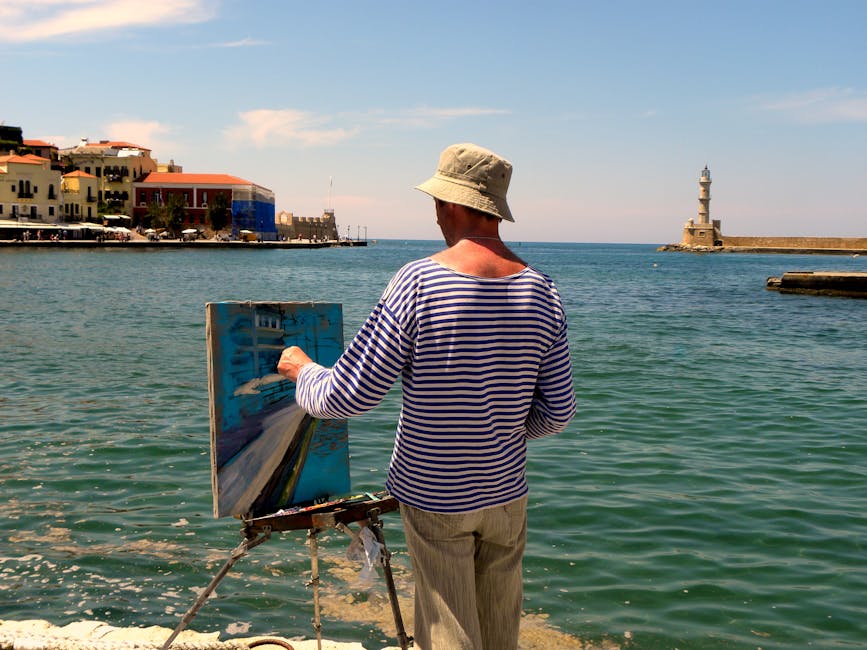Hudson River School Influence
Frederic Edwin Church, a standout pupil of Thomas Cole, embodied the Hudson River School's principles. Rooted in detailed landscapes and sweeping, romantic scenes, the school shaped Church's artistic vision. His paintings blended scientific observation with imagination, capturing both the grandeur of nature and its intricate details.
Church expanded the Hudson River School's scope beyond America, turning it into a global artistic movement. Through his travels to diverse environments like the Caribbean islands and the Arctic, he stretched the boundaries of the tradition. His works became anthems of global wonder, transforming the school's focus from local American landscapes to worldwide vistas.
Church's legacy within the Hudson River School is one of union between the personal and universal, the real and imagined. While building on the foundation laid by artists before him, Church blazed new trails, ensuring the school's influence extended far beyond its original scope.
Church's Global Travels
Frederic Edwin Church's artistic journey was deeply influenced by his extensive travels. His expeditions to South America, the Arctic, and the Middle East not only broadened his horizons but also profoundly impacted his work.
In South America, Church explored the Andes, drawing inspiration from Alexander von Humboldt's writings. His paintings, like "The Heart of the Andes," captured the continent's diverse ecosystems with both scientific precision and romantic flair. These works weren't mere landscapes but symphonic compositions celebrating nature's diversity.
Church's Arctic expeditions resulted in frozen landscapes that portrayed the stark beauty of the North. His icy scenes conveyed both the austere grandeur and the intimate details of this extreme environment, inviting viewers to contemplate nature's sublime qualities.
The Middle East provided Church with yet another source of inspiration. His time in Damascus and Jerusalem infused his later works with Oriental influences, creating a bridge between cultures through art.
Each journey enriched Church's understanding of light, space, and detail. His global travels allowed him to bring the world's wonders home to his audience, transforming his canvases into windows to distant lands.
Signature Works and Techniques
Frederic Edwin Church's masterpieces showcase his innovative techniques and signature style. Works like "Niagara" and "Heart of the Andes" exemplify his ability to make nature feel both grand and intimate.
"Niagara" captures the waterfall's power with exacting detail, making viewers feel as if they're at the precipice. Church's brushwork maps the water's turbulence and spray, transforming the canvas into a living force of nature.
"Heart of the Andes" offers a panoramic journey into South America's landscape. Church's attention to detail, from individual leaves to sweeping vistas, invites viewers to explore the painting as if traversing the terrain itself.
Church's mastery of light and atmosphere gives his works their emotional depth. His skies are dynamic elements, often featuring dramatic clouds and sunsets that set the mood for the entire piece. This orchestration of light imbues his paintings with a sense of time and place, drawing viewers into the scene.
His technique blends precision with emotion, exploration with exactitude. Every brushstroke seems to capture the energy of the landscapes he loved, from roaring waterfalls to hushed twilights. Church's artistry offers a vivid portrayal of the world's diverse beauty, stirring the viewer's soul with its power and detail.
Olana: Church's Artistic Haven
Olana, Frederic Edwin Church's home in New York's Hudson Valley, stands as a living testament to his artistic vision. More than just a house, it's an extension of Church's canvases, a three-dimensional masterpiece that reflects his global influences and love for beauty.
Designed collaboratively by Church and architect Calvert Vaux, Olana blends Victorian and Moorish styles, echoing the eclecticism in Church's art. Every architectural detail, from fluted arches to intricate wood inlays, was orchestrated by Church himself.
The estate's location offers sweeping views of the Hudson River and Catskill Mountains, turning the surrounding landscape into a living canvas that changes with the seasons. These views likely influenced many of Church's later works.
Within Olana, Church's studio space served as the heart of his creativity. Here, surrounded by carefully chosen colors and materials, he transformed his global experiences into art.
Today, Olana is preserved as a tribute to Church's artistic legacy. It continues to inspire visitors, offering a glimpse into the mind of an artist who saw the world as a canvas of endless possibilities.
Church's Legacy and Influence
Frederic Edwin Church's influence extends far beyond his time, inspiring generations of artists and art lovers. His pioneering spirit and visionary approach continue to guide contemporary artists, especially those exploring the intersection of nature and identity.
Church's ability to evoke emotion through landscape has influenced artists like Edward Hopper and Georgia O'Keeffe, who similarly infused their work with profound emotional depth. His international expeditions also paved the way for American artists to embrace global perspectives.
Olana, Church's home-studio, has inspired a trend where living spaces become expressions of their creative inhabitants. This concept encourages holistic approaches in today's art communities.
Church's legacy also includes the power of artistic community. His interactions with peers and patrons highlight the importance of creative networks, a principle that continues to nurture artists worldwide.
As time passes, Church's enduring legacy continues to inspire new generations of artists, encouraging them to see the world with wonder and translate that awe into their work. His art remains a testament to the lasting impact of a true visionary.

Frederic Edwin Church's legacy invites us to see the world through his eyes, embracing the beauty and wonder that surrounds us. His work continues to inspire, urging us to approach both art and nature with curiosity and appreciation.
- Ketner JD. The emergence of the African-American artist: Robert S. Duncanson, 1821-1872. University of Missouri Press; 1993.
- Harvey E. Alexander von Humboldt and the United States: Art, Nature, and Culture. Smithsonian American Art Museum; 2020.
- Avery KJ. Church, Frederic Edwin. Grove Art Online. Oxford University Press; 2003.























